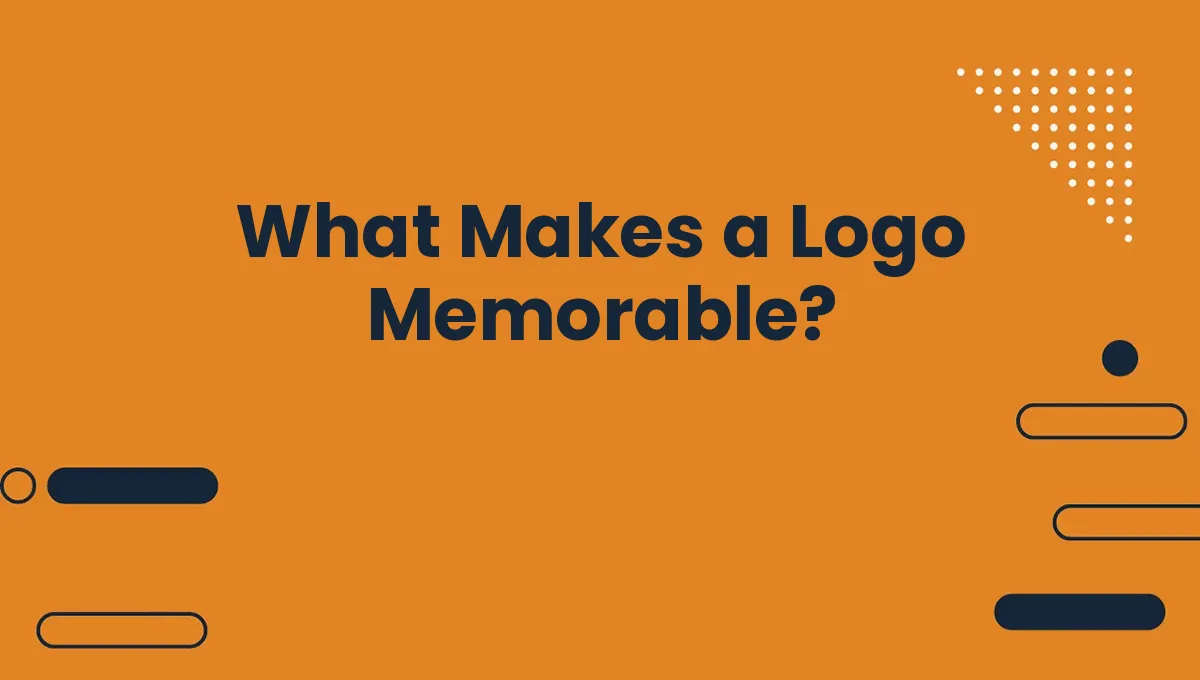Title: What Makes a Logo Memorable?
In a world bustling with brands vying for attention, the art of logo design holds a pivotal role. A logo is much more than just a visual emblem; it is the face of a brand, often the first impression that lingers in the minds of consumers. As we navigate through market dynamics, the question arises: what truly makes a logo memorable?
At Cham Agency, we understand that crafting a logo is an intricate balance between aesthetics, meaning, and emotional connection. It’s not just about creating something visually appealing; it’s about designing an identity that resonates, communicates values, and establishes familiarity. This exploration will delve into the essential elements that contribute to a logo’s memorability, offering insights that can definitely help businesses elevate their branding strategy and capture their audience’s heart—one pixel at a time.
understanding Simplicity and Clarity in Logo Design
In the world of logo design, simplicity and clarity are paramount.A clean and uncomplicated logo is often more effective than intricate designs, as it allows the audience to quickly grasp the brand’s identity and mission.A accomplished logo should communicate the essence of a brand without overwhelming the viewer with unnecessary details. This can be achieved by focusing on key elements such as shape,color,and typography,which together create a striking visual representation. For instance, logos that use negative space cleverly often leave a lasting impression while maintaining a streamlined appearance.
Furthermore, clarity in a logo ensures that it remains versatile and adaptable across various media formats, from business cards to billboards. To achieve this,designers can adhere to a few essential principles:
- Limit Color Palette: choose 1-2 primary colors to reinforce brand identity.
- Utilize space Wisely: Striking the perfect balance between elements creates harmony.
- Select Readable Fonts: Typography should enhance the logo, not create confusion.
| Design Element | Impact on Memorability |
|---|---|
| Simplicity | Enhances instant recognition |
| color | Evokes emotions and associations |
| Typography | Conveys personality and tone |
the Role of Color psychology in Logo Memorability
Color psychology plays a pivotal role in the way individuals perceive and remember logos, acting as a silent yet powerful communicator of brand values and attributes. Different colors evoke specific emotions and associations, allowing businesses to craft narratives that resonate deeply with their target audience. For example:
- Red: Evokes passion and urgency, making it effective for brands seeking to create excitement.
- Blue: Conveys trust and professionalism, frequently enough used by businesses in finance and healthcare.
- Yellow: Represents optimism and creativity, ideal for brands aiming to capture a sense of energy.
The right color choice not only enhances the visual appeal of a logo but also fosters a strong emotional connection with consumers, which significantly bolsters memorability. A well-designed logo paired with an effective color strategy can lead to:
| Brand A | Color Used | Emotional Response |
|---|---|---|
| Fast Food Chain | Red and Yellow | Hunger and Excitement |
| Tech Company | Blue | Trust and Dependability |
| Eco-Kind Brand | Green | Calmness and Sustainability |
Ultimately, by strategically employing colors that align with their mission and vision, brands can not only enhance the likelihood of recognition but also foster a lasting emotional response that keeps their logos at the forefront of consumers’ minds.
Uniqueness and Distinctiveness as Key Factors
Memorable logos stand out in a crowded market due to their uniqueness. A logo that breaks the mold can capture attention and remain etched in the minds of viewers. When designing a logo, it’s essential to incorporate distinctive elements that resonate with the brand’s identity, ethos, and target audience. Here are some critical aspects to consider for creating a unique logo:
- Originality: Strive for shapes and concepts that aren’t commonly used in your industry.
- Color Palette: Utilize a distinctive combination of colors that convey your brand’s personality.
- Typography: Opt for custom font styles that align with the brand’s voice, making the logo instantly recognizable.
Furthermore, distinctiveness ensures that a logo not only captures attention but also communicates a brand’s message effectively. Logos that convey a clear story or emotion tend to be more impactful. Consider these building blocks to enhance a logo’s distinctiveness:
- Symbolism: Integrate symbols that resonate with your audience’s values and beliefs.
- Versatility: Ensure the logo looks visually appealing in various formats and sizes.
- Timelessness: Avoid trends that may quickly become outdated; choose designs that remain relevant over time.
| Factor | Description |
|---|---|
| Uniqueness | Breaks industry norms with original elements. |
| Distinctiveness | Communicates brand values effectively. |
| Memorability | Stays in the audience’s mind long after the first glance. |
The Importance of Versatility Across Different Mediums
in the dynamic world of branding, the significance of adaptability in design cannot be overstated.A logo must transcend its initial creation to thrive across various platforms and media. Whether it’s a sleek digital request on a mobile app or a striking physical presence on billboards and merchandise, a memorable logo needs to maintain its essence while adapting to different formats. This adaptability ensures that it resonates with diverse audiences, enhancing brand recognition while creating a lasting impression.
Moreover, versatility includes an understanding of color schemes, sizes, and styles that work in tandem with varied backgrounds. consider the following elements that contribute to a logo’s ability to shine in multiple realms:
- Scalability: A memorable logo looks compelling both as a tiny social media avatar and a grand storefront sign.
- Color Versatility: It must retain its impact in full color while still being recognizable in monochrome.
- Contextual Relevance: The design should convey the brand’s message, nonetheless of the platform it appears on.
Insights and Conclusions
In the ever-evolving landscape of branding, a memorable logo is more than just a visual identifier; it serves as a bridge connecting a company’s ethos with its audience’s emotions. As we’ve explored, elements such as simplicity, relevance, versatility, and originality play pivotal roles in crafting a logo that sticks in the minds of consumers. Each stroke and color choice weaves a story, encapsulating the essence of a brand in a single image.
As we conclude our journey through the art and science of logo design, it is clear that a truly memorable logo transcends aesthetics. It resonates on deeper levels, forging lasting connections that can elevate a brand from obscurity to ubiquity.Whether you’re a business owner or a budding designer,understanding these principles can empower you to create logos that not only stand the test of time but also leave an indelible mark on the canvas of branding. As you venture into your next project, remember: in the world of logos, creativity is your compass, and intention is your guide.





